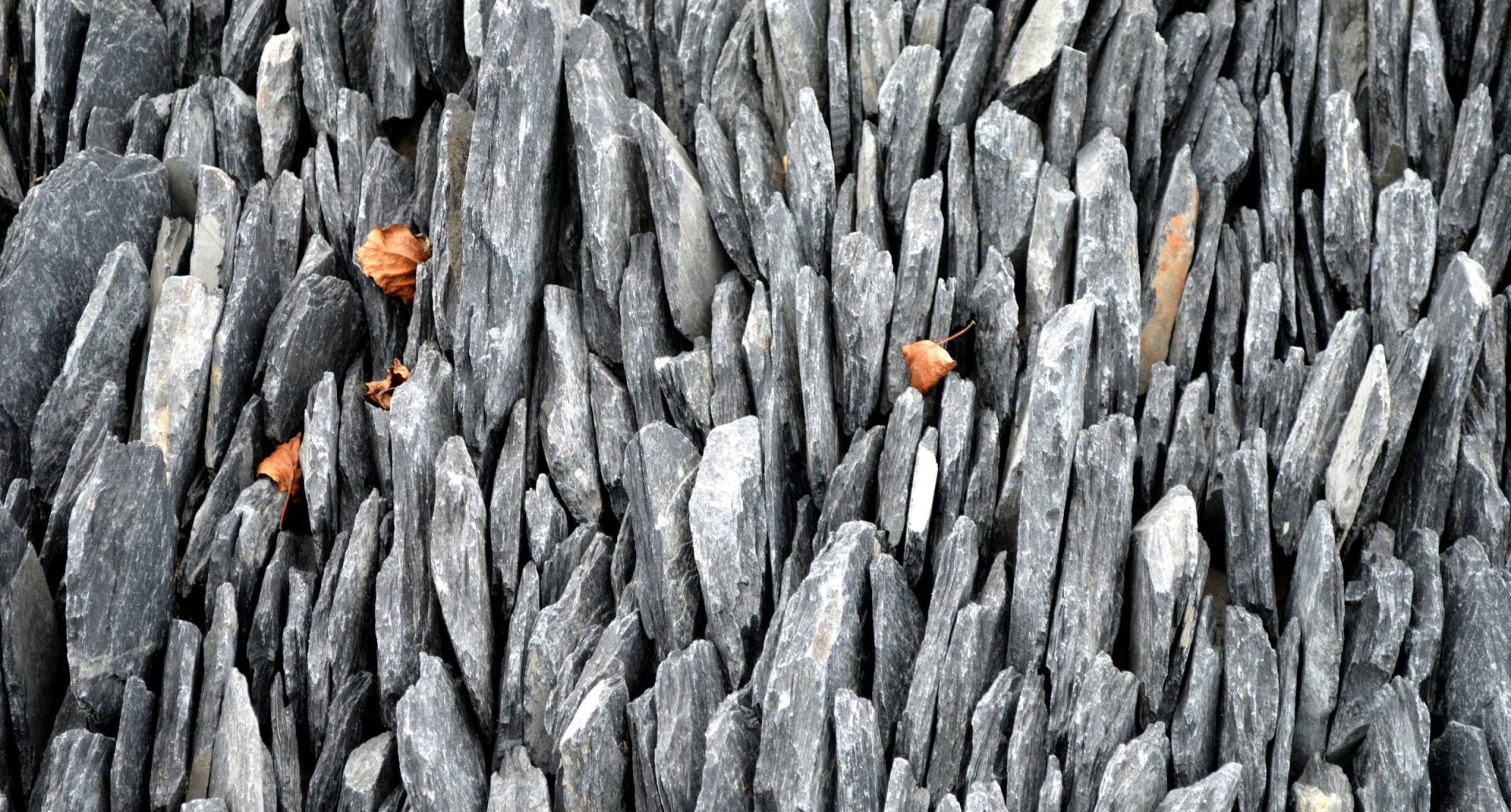Stone : schist (slate)
Type : metamorphic rock derived from a sedimentary rock
Age : between 346 and 330 million years
Quarry : Moulin de la Lande, Maël-Carhaix (Côtes d’Armor)
Not All Schists Are Slate
Schists have a foliated appearance and can split into more or less thin layers. They originate from a very fine-grained sedimentary clay rock (argillite). The layering is due to the reorientation of minerals during folding phases. However, not all schists can be used as slate. Whether they are suitable depends on several factors: grain size, mineral composition, and the structure or geometry of the layers.
Ancient Marine Deposits
The schists of Maël-Carhaix belong to the Châteaulin Schist Formation. The presence of crinoid (echinoderm) and plant fossils indicates a shallow, likely coastal marine environment. This sedimentary formation resulted from the accumulation of terrestrial debris eroded from the ancient reliefs of the time.
A Slate of Prestige
The underground quarry at Moulin de la Lande, opened in 1890, was the largest slate production site in Brittany. It permanently closed in 2000. Many prestigious buildings are roofed with Maël-Carhaix slate: the French National Assembly, the Château de Vincennes, the Sorbonne, the Parliament of Brittany in Rennes, and the Château de Trévarez in Finistère. Today, the quarry operator repurposes slate waste for mulch.

Reopening Slate Quarries?
Slate extraction in the Armorican Massif dates back centuries, but the activity is currently halted. The last major slate quarry in Anjou (Maine-et-Loire) closed in 2014, and the last Breton slate artisan, Yffig Guyomarc’h, ceased operations at the Plévin quarry (Côtes-d’Armor) in autumn 2018. Today, slate is primarily imported from large quarries in northwestern Spain (Galicia). However, the situation is evolving—some industry professionals are seriously considering reopening the Maël-Carhaix quarry (Côtes-d’Armor).

